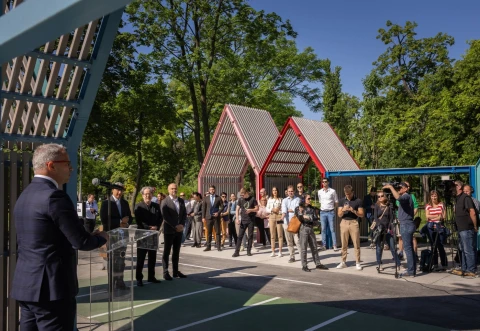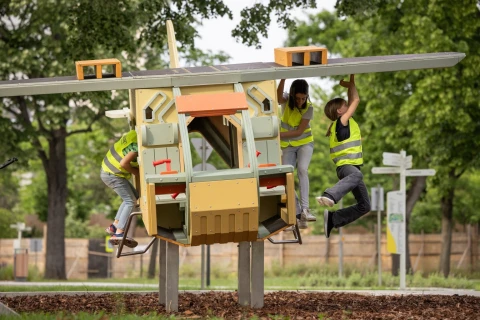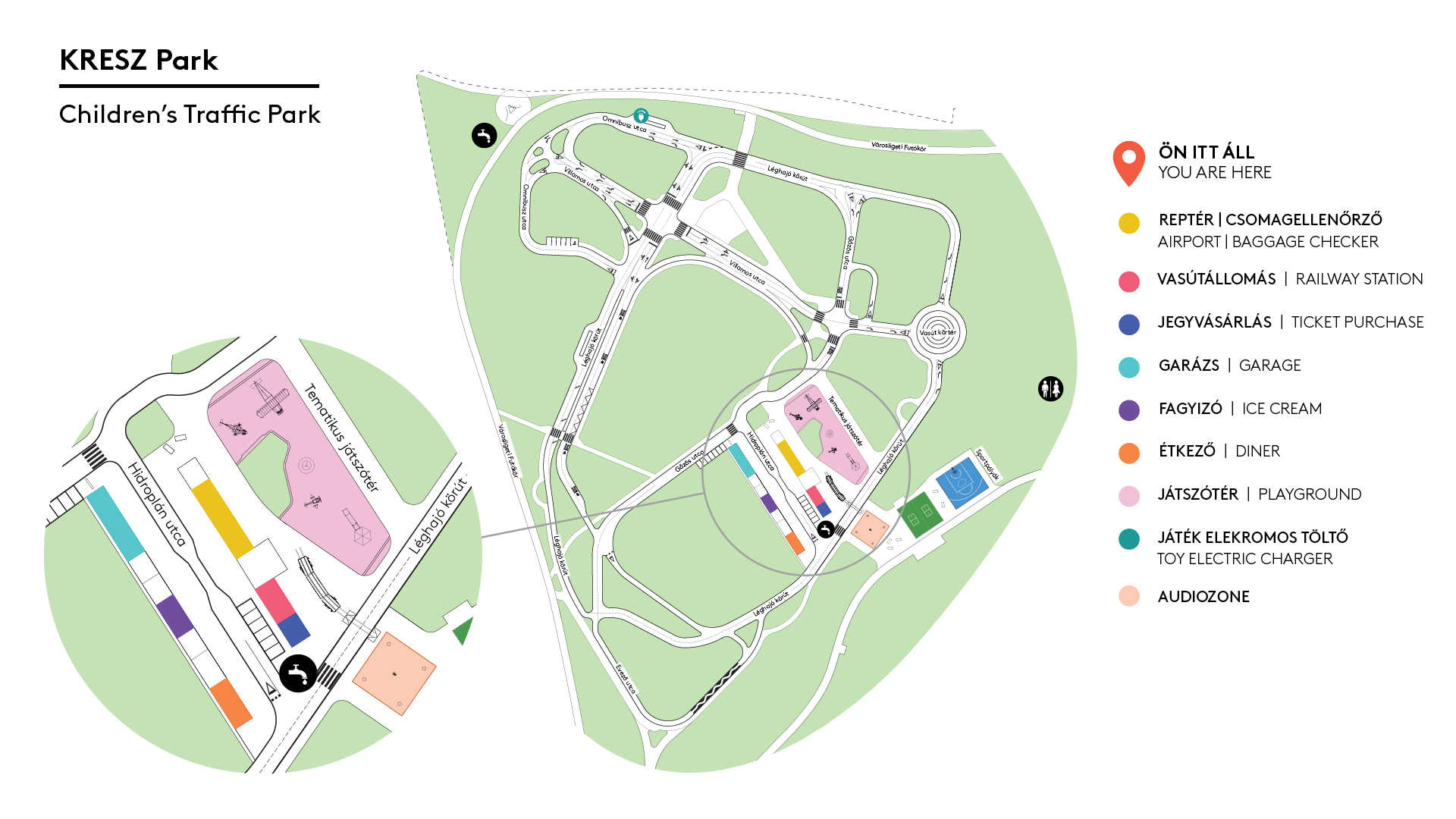

Childrens' Traffic Park
One of the traditionally most popular family-friendly spots in the City Park is the part that allows children to practice everyday traffic situations: the Children’s Traffic Park. Over the last few decades, this facility fell into a dilapidated state and, therefore, its renewal was long overdue. This finally took place in 2024, thanks to the Liget Budapest Project. The re-opening of the traffic park enriched the family-friendly attractions of the City Park since it can be compared in size, complexity and attractiveness to the Main Playground, which has drawn three million visitors so far. Children are greeted here by miniature trains, planes, helicopters and a control tower, while a miniature city district has also been built, where they can practice the basics of safe traffic in an interactive environment.
The renewed Children’s Traffic Park has become the largest and most complex green areas in the country, playfully teaching children of all ages traffic regulations, while also serving as a suitable venue for recreation and sport. As a result of the renovation project, the traffic park and its surroundings were fundamentally rebuilt: modern play features were installed, the transport infrastructure was modernised, and green areas and rest areas were expanded. A total surface area of over 30 thousand square metres has been fundamentally rejuvenated, and 39 deciduous trees, over 5,600 shrubs and some 22 thousand perennials have been planted. During the renewal, special attention was paid to safe and obstacle-free access.

Learning through play
The function of this part of the City Park continues to be teaching children the basic rules of the highway code and how to deal with everyday road traffic situations in a playful way they can understand. The traffic equipment installed in the Children’s Traffic Park were implemented at a reduced scale of 1:2. The main attraction is a miniature district, in which a whole streetscape comes to life with traffic signs, traffic lights, railway barriers, petrol stations, assembly points and even an EV charger. Both sides of the miniature city are lined by rows of little houses, in the covered units of which there is a furnished railway station, airport and passenger waiting room.
Recreation for the whole family
Young visitors to the Children’s Traffic Park will be greeted by playful activities with a traffic theme. Assisted by museum educators from the Hungarian Museum of Technology and Transport and the Bikeride Sports Association’s experts, children can learn everything from a basic knowledge of the highway code through defensive biking to the most important regulations for accident-free traffic. Naturally, during its development, educational institutions located in the surrounding districts of the City Park were also considered, so ping-pong tables and a streetball court were set up on the southern side of the Children’s Traffic Park, in an easily accessible spot. Catering to the comfort of the whole family, there are drinking fountains and new street furniture. The paved areas for bicycles, kids’ cars and scooters have been supplemented with pavements clearly marking pedestrian traffic. Safe use after dark is facilitated by a uniform new public lighting system, which can also be seen in the previously renovated parts of the City Park.
A bit of history
The Children’s Traffic Park, located in the north-eastern corner of the City Park, was constructed in the 1970s and for a long time it was the largest traffic parks in Budapest, where thousands of children learned the basic regulations of road traffic long before they got a driver’s license. Unfortunately, after the change in the political system, the park was utterly neglected and unprotected, and so over time became unusable. The area deteriorated even more in the first decade of the 2000s, although in 2006 some minor renovation work was carried out in cooperation with NGOs. However, its long-awaited complete renewal could only be implemented with the adoption of the Act on the renewal of the City Park and the establishment of the Liget Budapest Project.